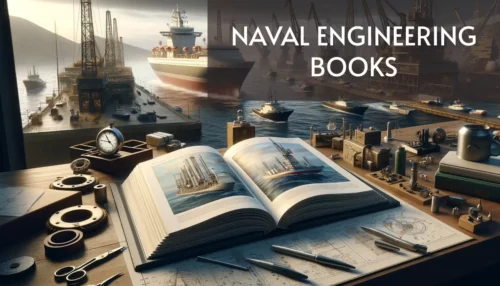Welcome to our collection of free engineering books! If you’re looking for works and resources to dive deeper into this exciting field, you’ve come to the right place.
Here you’ll find a wide variety of engineering books available for free download. Our collection includes engineering books for all levels and specialties, including civil engineering, mechanical engineering, and electrical engineering.
Whether you’re starting in the engineering field or an expert seeking new challenges, we have the resources necessary to keep you up-to-date and advance your career.
In addition to providing access to valuable engineering books, our goal is to offer you an exceptional user experience. To achieve this, our team constantly works to optimize the site and update the library.
Don’t wait any longer and explore our impressive selection of free engineering books. We are confident that you will find something that inspires you and helps you achieve your professional goals in the various branches of this fascinating discipline.
1) Aeronautical Engineering Books
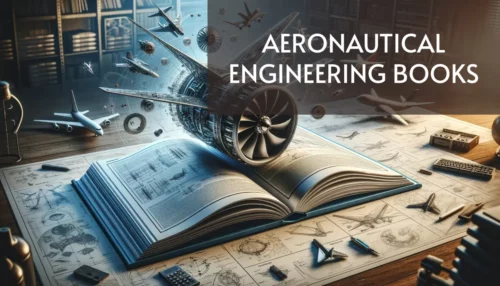
Aeronautical or Aerospace Engineering is a branch of engineering that studies the design and construction of aircraft, spacecraft and the equipment they require. It covers the fields of aeronautical engineering, related to the design of systems that fly in the atmosphere, and aerospace engineering, the latter being understood as that which deals with the design of the propulsion vehicles and devices that will be placed in outer space.
Aeronautical engineers apply science and technology to the research, design, manufacture and maintenance of aircraft, missiles, satellites and space vehicles.
Professionals in aeronautical engineering must acquire knowledge and develop creative skills, technical training and values inherent to the world of production and technological development.
2) Agroindustrial Engineering Books
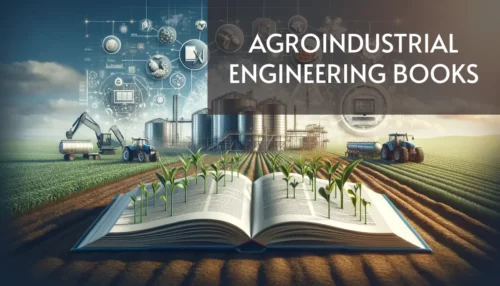
Agroindustrial engineering deals with the transformation of agricultural, forestry, or fishery products into goods that can satisfy people’s needs. These goods may be foodstuffs or of other kinds, such as textiles and perfumes. To do so, it employs elements of mathematics and natural sciences, as well as physics, chemistry, and biology.
An agro-industrial engineer will demonstrate creativity in finding solutions to the problems of producers, processors, and marketers, especially on a small scale, taking into account the scarcity of resources, the economic crisis, and the lack of markets.
Among the advantages that agroindustrial engineers have is that they can specialize in one of the various branches of agroindustry: agriculture, livestock, fisheries, forestry, fruit, and food.
3) Automotive Engineering Books
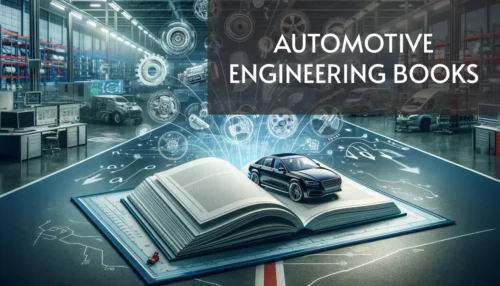
Automotive Engineering is a branch of mechanical engineering that deals with the design, development and manufacture of automobiles, trucks, motorcycles and other motor vehicles. It incorporates in its evolution parts of electrical, mechanical, electronic, software and safety engineering.
An automotive engineer works in the automotive industry, where he/she can work in different production areas, so the daily tasks vary. Mostly, they are in charge of designing, planning, assembling, supervising and repairing throughout the entire production process.
Automotive engineers also design and test the many subsystems or components that make up a motor vehicle. These professionals are increasingly working on the aesthetics and technical performance of cars, as well as on the modernization of their electronics and software.
4) Basic Engineering Books
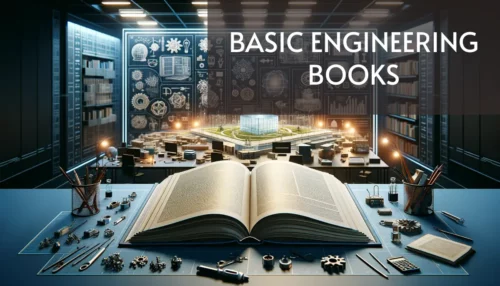
Basic engineering defines the basic guidelines of a project. Those in charge of basic engineering are a group of engineers, who will be responsible for drawing up plans, technical specifications and, if necessary, will be in charge of the bidding process.
Basic engineering is not constructive, since it does not have enough descriptive elements to execute the project; however, it will provide the basis for the development of detailed engineering.
Basic engineering is still conceptual since its documents do not include representations of the physical materialization of the facility’s components, but rather abstract representations are used, through symbols or functional and operational descriptions.
5) Biochemical Engineering Books
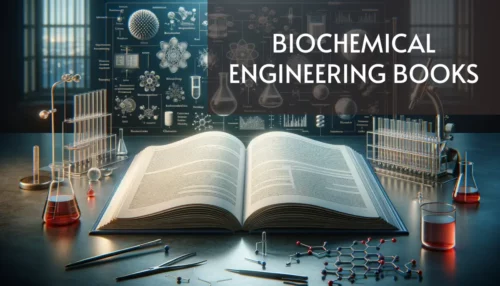
Biochemical engineering is the career that must be followed to dedicate oneself to the study of biomolecules, their dynamics, their metabolic routes, and all the phenomena that have the chemical and biological origin of organic beings, to take advantage of the resources that may arise from there and, through other artificial processes, to commercialize them.
It is a discipline that is distinguished from others related to biology by the application of physical and chemical principles to achieve a quantitative understanding of biological transformations.
Biochemical engineers are creators who use their scientific knowledge to make products, such as medicine, or to refine the ways in which things like food are processed.
6) Bioengineering Books
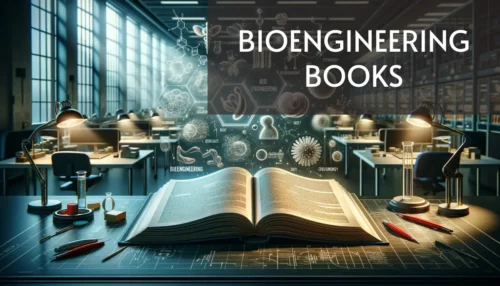
Bioengineering is a discipline that appeals to engineering tools, methods, and principles for analyzing issues related to biology. Resources related to mathematics and physics can provide information of interest to those who work with everything related to living beings.
Bioengineers, in short, are engineers who combine the tools of their science with notions of biology to design and create diagnostic devices, medical devices, bioenergy resources, and other products.
While traditional engineering uses physical and mathematical sciences to analyze, design and manufacture inanimate tools, structures, and processes, bioengineering uses the exact sciences to study numerous aspects of living organisms. It is generally used to analyze and solve problems related to human health.
7) Biomedical Engineering Books
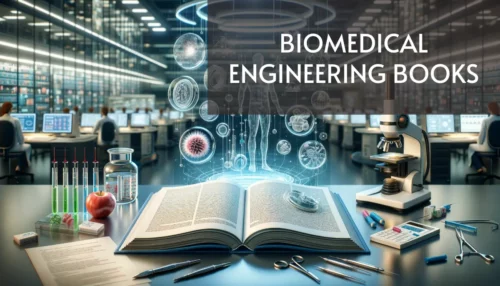
Also known as bioengineering, it is the application of engineering disciplines such as telecommunications, electronic engineering, or computer science to the life sciences, i.e., medicine, pharmacy, biology, or biotechnology.
Biomedical engineers have a strong background in mathematics, physics, electronics, programming, and information analysis, and receive specific training in biology and medicine, and much of the work in biomedical engineering consists of research and development.
The main applications of biomedical engineering include the development of biocompatible prostheses, various diagnostic and therapeutic medical devices ranging from clinical equipment to micro-implants, and common imaging equipment such as MRI and electrocardiograms…
8) Chemical Engineering Books
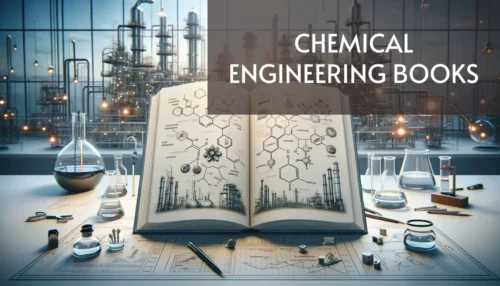
The chemical engineer is a professional with solid knowledge of the engineering of processes aimed at the optimal use of matter and energy, compatible with sustainable development, in which matter is treated to effect a change in its state, its energy content or its composition.
In professional practice, the chemical engineer is capable of performing tasks in the process industry, which will basically consist of designing, selecting, evaluating, adapting, implementing and operating the technology in an efficient manner, seeking to improve the competitiveness of the company and taking care of the environment, as well as being trained to work in research and development.
Chemical engineering is based on basic sciences such as mathematics, the basic sciences of chemical engineering and applied disciplines such as process engineering, reactor design, chemical process equipment design, and separation process.
9) Civil Engineering Books

Civil engineering is the professional engineering discipline that uses knowledge of calculus, hydraulics and physics to take care of the design, construction and maintenance of infrastructures. In short, we could say that civil engineering is present in all aspects of our lives.
This engineering, in addition to construction activities, also includes the inspection, revision and maintenance of what has been built. In this way, it contributes to the protection of the environment and the prevention of accidents related to engineering works.
The civil engineer is directly related to the construction site. Therefore, he/she should have knowledge of electronics, hydraulics and architecture. They must also work closely with the masons and other professionals involved in the construction site.
10) Economic Engineering Books

Engineering economics is the branch that deals with calculating the monetary elements, the values that engineers take and suggest to their work to make a company highly profitable and competitive in the economic market.
As a discipline it is closely related to others, such as statistics, mathematics and cost accounting. It is based on the logical framework of economics, but adds to it the analytical capabilities of the aforementioned disciplines.
The techniques of engineering economics consist of the action used to identify, locate and discard the useless cost in the realization of a sketch, in the development, acquisition, elaboration and awarding of a product or service, without diminishing its own quality, without failures, with a good performance.
11) Electrical Engineering Books
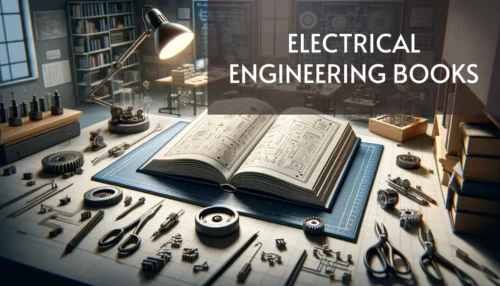
Electrical engineering is the branch of engineering that studies electricity, electronics and electromagnetism to generate, transport, use and distribute electrical energy.
This discipline solves complex problems of high power electrical systems. An electrical engineer must be very well prepared to address them effectively, their knowledge must be broad and strong, both theoretical, practical and technical.
The most studied sciences on which this career is based are Physics and Mathematics. Since they are the starting point of the phenomena in nature, which later on will be the most important ones for any engineer of any branch or specialization.
12) Electromechanical Engineering Books
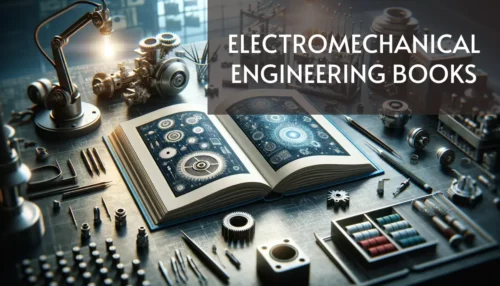
In case you want to acquire, reinforce or expand your knowledge about engineering that merges several areas, you can consult the free electromechanical engineering books in PDF format, which we present on this occasion.
This engineering is responsible for the analysis, design, development, manufacture, and maintenance of electromechanical devices and systems, which combine mechanical and electrical parts in their mechanisms.
To read about everything that electromechanical engineering involves, we bring you a vast collection of texts with detailed, precise, and specialized information.
13) Environmental Engineering Books
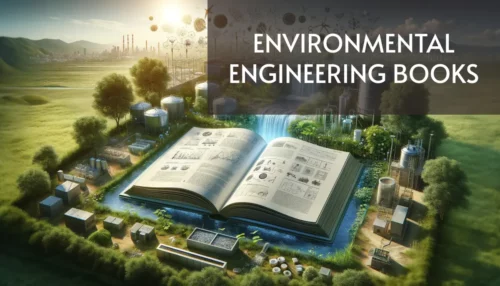
Environmental engineering is a branch of engineering that deals with the study of environmental problems taking into account the contributions of several fields of knowledge, such as chemistry, physics, biology, geology, sociology or economics. It is based on the design, application and management of processes, products and technological services to offer proposals and solutions for the prevention, control and remedy of problems related to the environment.
This developing discipline sees its objective more and more clear and has been consolidating as a necessity, since it provides a series of propitious solutions to face the current ecological crisis that the planet is experiencing. For this reason, it is considered by many people as a profession with a great future.
Working in environmental engineering has a direct impact on the sustainable development of the planet. Whether improving the design to reduce the environmental impacts of a civil work or carrying out external audits, you will contribute to the conservation of the environment.
14) Fluid Mechanics Books

Fluid mechanics is part of physics and, as such, is a science specializing in the study of the behavior of fluids at rest and in motion. But what is a fluid? A fluid is defined as a substance that changes shape relatively easily; fluids include both liquids, which change shape but not volume, and gases, which easily change shape and volume.
Fluid mechanics is fundamental to fields as diverse as aeronautics, chemical, civil and industrial engineering, meteorology, shipbuilding and oceanography.
The significance of the principles of fluid mechanics has given rise to such common inventions as: water transfers through canals, sea and air transport, hydraulic, thermal and pneumatic machines, solutions in pipelines to cavitation or water hammer problems, hydraulic and pneumatic transmissions and controls, etc.
15) Genetic Engineering Books
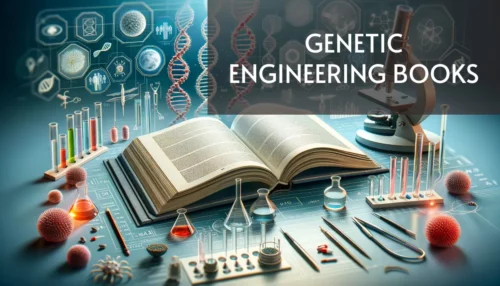
Also known as genetic manipulation, this consists of manipulating and directly transferring the genes of one organism to those of another. In a way, it consists of mixing the genetic information of different living beings to solve problems or defects in one of them.
Genetic engineering is a term that was first introduced into our language in the 1970s to describe the nascent technology of DNA recombination and some of the things that were happening around it.
Genetic engineering together with biotechnology (use of microorganisms, cell, tissue, and organ cultures for the manufacture of biological products) form a great alliance that serves and will always serve as a great help to mankind. They are also supported by other sciences such as microbiology, biochemistry, and chemical engineering.
16) Geological Engineering Books
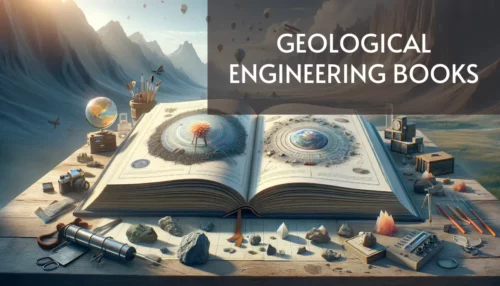
Engineering geology is a branch of engineering dedicated to addressing and resolving all those issues directly or indirectly related to the geological environment and its interaction with human beings.
The main objective of Geological Engineering is to ensure that geological factors, i.e. those imposed by the earth and that are conditioning factors of engineering or mining works, are taken into account and properly interpreted, avoiding or mitigating the consequences that these activities may generate.
The geological engineer is a professional with the knowledge and capacity to participate in the activities of exploration, evaluation, exploitation, and use of energy, mineral, and hydrological resources, which makes him an important factor in the solution of problems of natural risks: earthquakes, floods, volcanic risks, and landslides, which have a wide social incidence.
17) Geotechnical Engineering Books
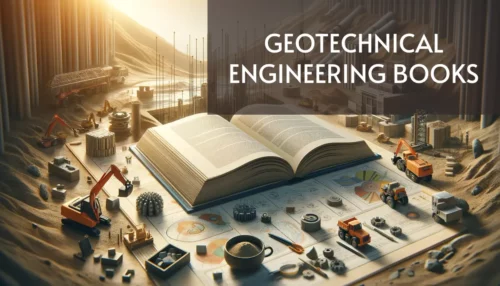
Geotechnical engineering or geotechnics consists of resorting to the precepts of engineering for the development of public works according to the qualities of the materials found in the planet’s crust. It can be considered as a branch of geology or civil engineering.
Geotechnics is a science that has applications in civil engineering, mining, environmental engineering, the energy sector, and geological risk management. But its main applications are in civil engineering works (construction works).
The geotechnical perspective on the physical, mechanical, hydraulic, etc., properties of the soil, the environment, and the materials used in construction is indispensable in preventing accidents and natural disasters.
18) Hydraulic Engineer Books
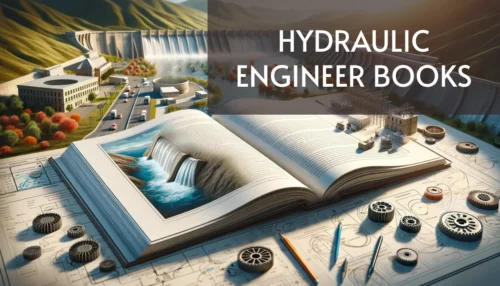
Hydraulic engineering has a long history, which dates back to the Romans, a precursor civilization that created several systems for channeling and utilization of water, including aqueducts, sewage, and baths, which were some of their contributions and inventions.
It deals with the design and execution of hydraulic works and is used for different functions, such as obtaining hydraulic energy, for irrigation, drinking water treatment, canalization, and for the construction of structures in seas, rivers, and lakes.
The functions of hydraulic engineers are to design, plan, build, and operate hydraulic works based on investigations primarily based on experimental results.
19) Industrial Engineering Books
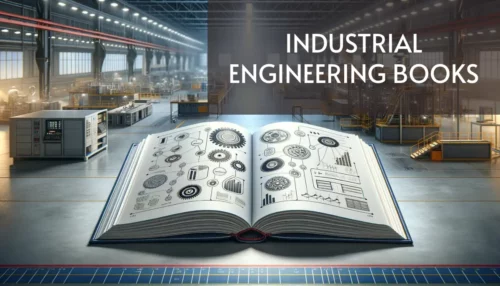
Industrial Engineering is by definition the branch of engineering responsible for the analysis, interpretation, understanding, design, programming and control of production and logistics systems in order to manage, implement and establish optimization strategies, with the aim of achieving the maximum performance of the processes of creation of goods and/or provision of services.
The Industrial Engineering professional can be seen as the managing agent of productivity improvement. Their efforts are directed to implement the best production process, through the design of integrated systems that involve the most important aspects of a company such as: employees, materials used, information, equipment including new technologies, and of course the energy available.
Here is our selection of books on Industrial Engineering so that you can enter this exciting world.
20) Mechanical Engineering Books
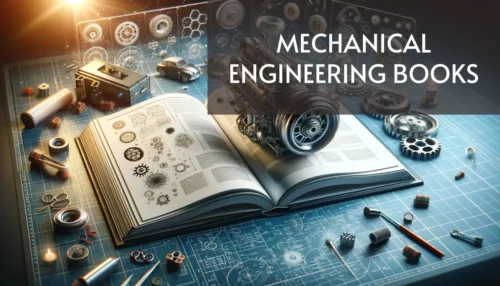
Mechanical engineering is a branch of engineering that applies the exact sciences, especially the physical principles of thermodynamics, mechanics, materials science, fluid mechanics and structural analysis to design, build and improve everything from ventilation systems to manufacturing locations, electronic machines, conveyor systems and other devices.
The mechanical engineer has the ability to use mathematical and computational tools to analyze, model and design physical systems composed of solid and fluid components, both in transient and stationary conditions. They also deal with the areas of thermal, mechanical and organizational systems, including the design and realization of such systems.
This area of engineering is highly required in different industries such as the automotive industry where it is involved in the development of the engine of an automobile and all its subsystems, in the aerospace industry where engines and control systems are developed.
21) Mechatronics Engineering Books
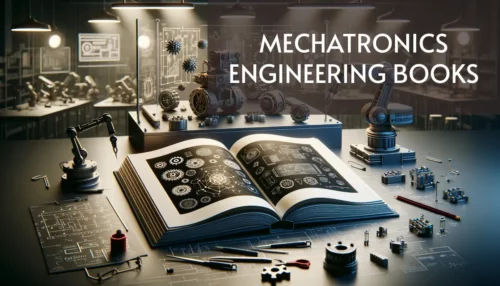
Mechatronics is a multidisciplinary area, as it incorporates elements of electronics, mechanics, robotics, computer systems and manufacturing. It also studies the various sensors and the operation of industrial machines, manufacturing processes, etc.
The term mechatronics emerged in Japan in the early 1980s and today is used for everything related to the improvement and simplification of industrial activity.
A mechatronics expert, therefore, can conceive, design, develop and operate automated and technologically advanced systems and equipment that make it possible to increase productivity and competitiveness. Their work can focus on meeting certain emerging needs and must be committed to having a positive impact in all areas, from the social to the political, including the environmental.
22) Metrology Books
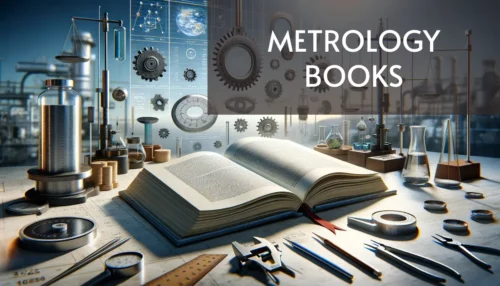
Metrology is the science and engineering of measurement, which includes the study, maintenance and application of the system of weights and measures. It operates in the scientific, industrial and legal fields, as well as in any other field demanded by society.
Its main objective is to obtain and express the value of magnitudes, ensuring the traceability of processes and the achievement of the accuracy required in each case, using the appropriate instruments, methods and means.
One of the tasks of metrology is to promote the calibration of instruments. This process makes it possible to compare what the instrument indicates and what it should indicate according to a reference pattern that has a known value. When the instrument is calibrated, it works accurately.
24) Nuclear Engineering Books
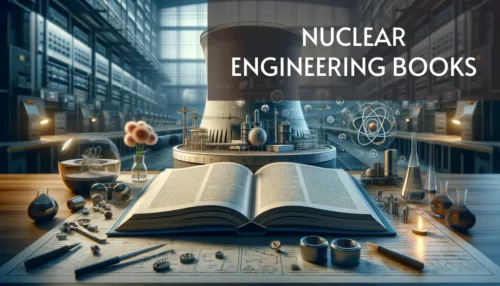
In order for you to have easy and practical access to all the information concerning the energy of atomic nuclei, we share with you a series of free nuclear engineering books in PDF format.
Nuclear engineers are in charge of developing new technologies, designing nuclear power plants, supervising the manufacture of nuclear equipment, operating nuclear facilities, and generating electricity based on nuclear energy.
You can know all the data concerning this branch of engineering, consulting the texts that we present in this section of our digital library.
25) Robotics Books
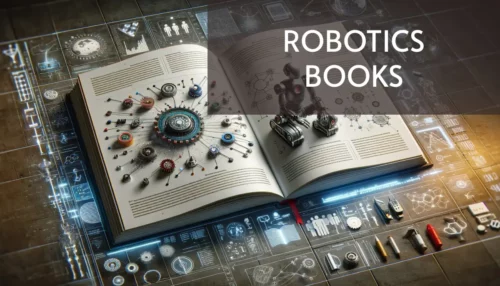
The truth is that robotics cannot be defined as a branch of a single science. It can be studied within the careers of electrical engineering, mechanical engineering, electronic engineering, computer science, as well as biomedical engineering.
With each passing day, robotics evolves and benefits us with its advances. Its main goal is always to help humans to make their personal, professional, business and working lives easier.
The notion of robots already existed in ancient Greece, where they were called automatons. They were the first attempts to recreate a human by means of a machine. The first to experiment was Heron in 85 BC.
26) Sanitary Engineering Books
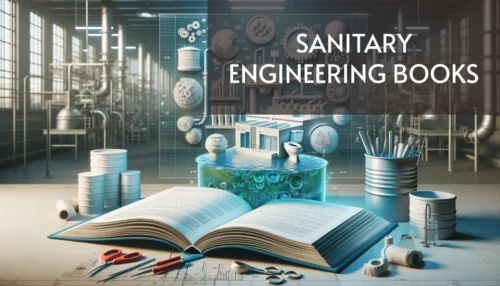
Area of engineering that deals with the solution of contamination and poor hygiene in highly populated areas. It is oriented to plan, design, manage, analyze, and develop the best options and technologies to solve such serious problems as poor hygiene and increasing environmental pollution.
Sanitary Engineering must take into account the relations with the societies that are located in the formations of the problems of the communities, which brings many problems to the organizations that always seek to maintain the administration in good order and adequate condition before the present conflicts that may arise before the diseases to be avoided, the uses and sanitary qualities that comprise each of them.
The interdisciplinary reality of sanitary engineering goes beyond its relationship with civil engineering, environmental engineering, or public health. The activity of the sanitary engineer is associated with other fields: industrial hygiene, food hygiene, the energy sector, or the cosmetics sector.
27) Structures Books

The word structure refers to the arrangement and distribution of the parts of a whole, whose order and relationship to each other allow the functioning of a given system. In a structure, each element has a specific function and a correlation with the other features that make up the structure.
It can be the distribution and order of the main parts of a building or a house, as well as the framework or base that supports the construction. In the case of the “armature”, its elements must meet the condition of stability and equilibrium.
From the point of view of modern architecture, the structures are technically based on two essential characteristics which are function and form or aesthetics, the same besides being considered pleasing to the eye of the people and sometimes luxurious, they must also be adapted in terms of space and functionality, depending on the properties and conditions of the construction site.
28) Systems Engineering Books
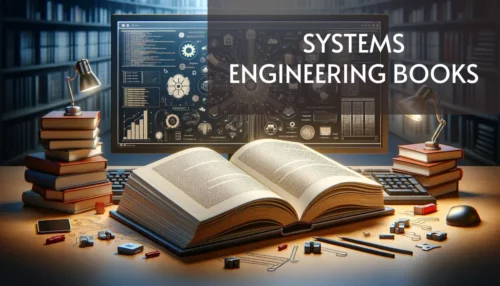
Systems engineering is concerned with the design, programming, implementation and maintenance of systems. Unlike other branches of engineering, this discipline is not concerned with tangible products (civil engineers, for example, construct buildings), but with logical products.
Systems engineering is not only based on solving problems through a computer, but focuses on any problem that requires the management of information through a system or organized steps that, in most cases, use the computer as a tool.
Systems engineers may work specifically in areas related to software evolution and implementation. They also work in the design of new systems that improve the conditions of a company at the level of technological control.
29) Telematics Engineering Books

The concept of telematics refers to the combination of computing and communication technology for sending and receiving data. The notion is associated with different techniques, processes, knowledge, and devices specific to telecommunications and computing.
Telematics deals with the technical or material aspect of interconnecting computer systems, which is of vital importance in today’s globalized world, so dependent on transactions and communications over long distances.
Examples of the services and networks that have been created through telematics include instant messaging applications, which are very useful and work on cell phones, as well as sending and receiving e-mails instantly.
30) Textile Engineering Books
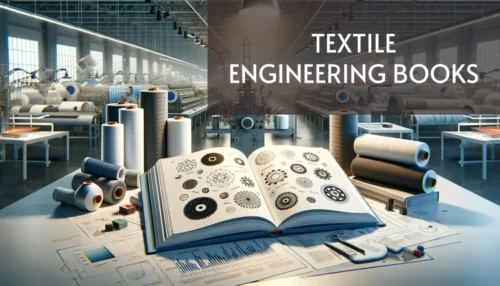
Textile engineering is the study of textile production, processing, and its compatibility for use by the common man. It combines the principles of engineering with specific knowledge of textile equipment and processes.
The work of the textile engineer is directed towards the textile industry, which includes clothing in its various forms, home clothing or protective clothing for special bodies (e.g. firefighters), and covers for automobiles or airplanes.
Other areas in which a textile engineer can develop are textile brokers, quality control laboratories, as well as distributors of textile equipment and supplies or quality management companies, fashion design, or accessories.




